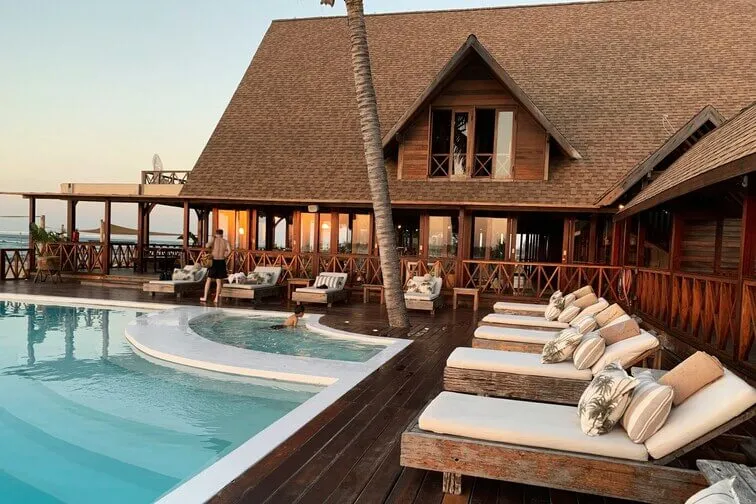Diwan-i-khas
Diwan-i-khas things to do, attractions, restaurants, events info and trip planning
Plan your stay
Posts
Diwan-i-Khas: Jewel of Mughal Architecture, is situated within Agra Fort in Uttar Pradesh, India, stands as a magnificent testament to Mughal architectural brilliance. This exquisite hall embodies the artistic sophistication and grandeur that characterized the empire at its height. Built in 1635 during Emperor Shah Jahan's reign, Diwan-i-Khas served as a private audience hall where the emperor received foreign ambassadors, nobles, and dignitaries to discuss matters of state. Beyond its political function, the hall's opulent design showcases the Mughal court's seamless blend of elegance and authority. The structure features two distinct sections, an outer columned hall and an inner chamber called Tambi Khana. The outer hall captivates visitors with its intricately carved marble pillars adorned with semi-precious stone inlays. These pillars display vibrant floral patterns, a signature element of Mughal decorative art that celebrates nature's beauty. Open on three sides with five graceful arches supported by ornate double columns, the hall creates an airy atmosphere. This thoughtful design allows natural light to flood the space while providing uninterrupted views of the surroundings, perfectly suited to its royal purpose. The hall's flat wooden ceiling, originally embellished with gold and silver leaf, represents one of its most striking features. This sumptuous decoration would have reflected sunlight, creating a dazzling effect throughout the space. Though time has diminished some of this splendor, remnants of the intricate work continue to mesmerize visitors. The interior walls feature delicate floral inlay work and Persian inscriptions that add cultural and artistic depth. Diwan-i-Khas holds profound historical significance beyond its architectural beauty. Emperor Shah Jahan conducted official ceremonies here, received foreign envoys, and made decisions that shaped the empire's future. The hall also hosted cultural gatherings, highlighting the court's patronage of the arts. One of the hall's most famous associations is with the legendary Peacock Throne. This extraordinary creation, encrusted with precious gems, originally resided in Diwan-i-Khas before being moved to Delhi's Red Fort. This connection further enhances the hall's historical importance. Located within Agra Fort, a UNESCO World Heritage Site renowned for its massive red sandstone walls, Diwan-i-Khas benefits from the fort's rich historical context. The fort served as the primary residence of Mughal emperors until the capital relocated to Delhi. Within this complex, Diwan-i-Khas occupies a strategic position near the emperor's quarters, offering visitors insight into Mughal governance and lifestyle. The hall's setting enhances its charm. From its open arches, visitors enjoy serene views of the Yamuna River and glimpses of the Taj Mahal in the distance. This harmonious integration of natural beauty and architectural refinement creates a peaceful atmosphere. Surrounding Diwan-i-Khas are verdant gardens and peaceful courtyards that contrast beautifully with Agra Fort's imposing architecture. These green spaces invite contemplation of the site's rich historical and cultural significance. Walking through Diwan-i-Khas transports visitors to an era of imperial splendor. Its detailed craftsmanship and historical importance leave a lasting impression, providing a window into Shah Jahan's reign and the Mughal era's cultural heritage. Diwan-i-Khas transcends being merely an architectural wonder; it stands as a living monument to the artistry, diplomacy, and luxury of the Mughal Empire, an essential destination for history enthusiasts, architecture admirers, and anyone seeking connection with India's illustrious past.
A J Bashha
00
Very Nice place, History: A result of earliest manifestation of Shah Jehan's love for marble, Diwan-I-Am or Hall of Public Audience was the place where the emperor addressed the general public as well as the nobility. Constructed between 1631-40, it is situated close to Machchhi Bhawan. The huge assembly hall measuring 201' by 67' has flat roof and two arched red sandstone gateways to the north and south. The façade has an arcade with nine bold arches and the hall is divided into three aisles. Though the building was constructed in red sandstone, yet it had been plastered with white shell plaster to resemble the white marble. The raised rectangular chamber from where the emperor addressed the people was ostentatiously ornamented. Made in marble, this 'jharokha' with a three-arched opening and inlaid with precious stones, was known as the 'Takht-i-Murassa' (the Throne Room). This chamber was connected to the royal apartments and the royal ladies could watch the ceremonials of the Diwan-i-Am through the marble windows with perforated screens on the right and left of the enperor's chamber, while not being seen by those in the hall. The marble dias below this chamber was known as 'Baithak'. It used to serve as the seat for Wazir, who presented petitions to the emperor. It is said that the hall used to have silver balustrades for the nobility, where they could stand according to their ranks and the outlines of the columns and the spandrels were done in gold.
Charanjeet Singh
00
Diwan-i-Khas or the Hall of Private Audience is a large pavilion meant for meeting the royal guests Built in 1635, this marble building has two halls, connected by three archways. The outer hall with double pillars, is beautifully inlaid with floral designs & has carved dados & niches Inner hall has paintings & floral designs. Diwan-i-Am is associated with Chatrapati Shivaji's Great Escape from the Agra Fort in 1666. After Jai Singh’s army encircled the Purandar fort, Shivaji was forced to sign the Purandar Treaty under which he agreed to hand over 23 out of the 35 forts held by him. Purandar Treaty was followed by his famous visit to Agra Fort, where Shivaji was humiliated at Diwan-i-Khas & kept under house arrest by Aurangzeb. Shivaji managed to escape from the Agra Fort within three months. Less than four years later, he launched fresh attacks to regain his surrendered forts & the Mughals lost all they had. In front of Diwani I Khas, on the riverfront side, lies the finely carved Jahangir’s black throne, brought from Allahabad in 1610. The crack in the throne is due to the uprising of the Jats of Bharatpur around 1765. Another white marble throne known as Shahjahani throne lies opposite to the black one
Geetha Pai
00
Khas Mahal is a riverfront courtyard built by Shah Jahan during 1631- 40 Khas Mahal portico has five archways in the front & three archways on the sides. Another three archways leads to the inner hall, with beautiful floral paintings & oblong niches on the white marble walls. Beautiful marble screens adorn the Yamuna facing side. Two chattris are found on the parapet only on the riverside. Khas Mahal is flanked by 2 pavilions with gilded bangla roofs On the north is the Bangla-i-Darshan (Imperial Viewing Pavilion), & on the south lies the Jahanara pavilion that belonged to Shah Jahan’s daughter Jahanara. A big rectangular sandstone tank on an elevated plinth contains five fountains & 32 jets The palace complex is surrounded by exquisite marble curtain walls known as Sar-i-parda In front of Khas Mahal is the Anguri Bagh/Grape Garden built in 1637 The tower to the east of the Khas Mahal is Musamman Burj
Geetha Pai
10
Khas Mahal is a riverfront courtyard built by Shah Jahan during 1631- 40 Khas Mahal portico has five archways in the front & three archways on the sides. Another three archways leads to the inner hall, with beautiful floral paintings & oblong niches on the white marble walls. Beautiful marble screens adorn the Yamuna facing side. Two chattris are found on the parapet only on the riverside. Khas Mahal is flanked by 2 pavilions with gilded bangla roofs On the north is the Bangla-i-Darshan (Imperial Viewing Pavilion), & on the south lies the Jahanara pavilion that belonged to Shah Jahan’s daughter Jahanara. A big rectangular sandstone tank on an elevated plinth contains five fountains & 32 jets The palace complex is surrounded by exquisite marble curtain walls known as Sar-i-parda In front of Khas Mahal is the Anguri Bagh/Grape Garden built in 1637 The tower to the east of the Khas Mahal is Musamman
Ruhulamin Molla
00
The precursor to the Diwan-e-Aam at Delhi's Red Fort, this one is a massive pillared pavilion, fronted by a large garden. This was where the emperor would meet the general public, so to say: ambassadors, people offering tributes and gifts, people beating petitions, and people he was rewarding. In addition, horses or elephants were paraded here before the emperor, among other more showy elements of state. The pillared hall is fairly bare, but the white marble throne area has some lovely inlay work. In front of the Diwan-e-Aam, in two separate enclosures of their own, are remnants of British rule in India: a British cannon, and the tomb of John Russell Colvin, lieutenant governor of the North-Western Provinces, who died of cholera in 1857.
Madhulika Liddle
00
Nearby Attractions Of Diwan-i-khas
Agra Fort
Shri Mankameshwar Mandir
Red Fort of Agra
Amar Singh Gate
Anguri Bagh
Shahjahan Garden
The Shish Mahal (The Glass Palace)
Jahangir Palace
Diwan-I-Am
Nagina Masjid

Agra Fort
4.5
(46.4K)
Click for details

Shri Mankameshwar Mandir
4.7
(2.5K)
Click for details

Red Fort of Agra
4.6
(783)
Click for details

Amar Singh Gate
4.5
(631)
Click for details
Nearby Restaurants Of Diwan-i-khas
Gopal Das Pethe Wale Johri Bazar
The Kesar Restaurant
Chimman lal Puri Wale
IRCTC Food Plaza Agra
Shree Ram Restaurant
The Manoj Restaurant
The Momo Heaven
Agra street food
Comesum
Aagra fort estesn

Gopal Das Pethe Wale Johri Bazar
4.1
(461)
Click for details

The Kesar Restaurant
3.8
(398)
$$
Click for details

Chimman lal Puri Wale
3.8
(233)
Click for details

IRCTC Food Plaza Agra
2.9
(75)
Click for details
Basic Info
Address
52HF+H8R, Agra Fort, Rakabganj, Agra, Uttar Pradesh 282003, India
Map
Phone
+91 1800 200 8335
Call
Reviews
Overview
4.4
(32 reviews)
Ratings & Description
cultural
scenic
attractions: Agra Fort, Shri Mankameshwar Mandir, Red Fort of Agra, Amar Singh Gate, Anguri Bagh, Shahjahan Garden, The Shish Mahal (The Glass Palace), Jahangir Palace, Diwan-I-Am, Nagina Masjid, restaurants: Gopal Das Pethe Wale Johri Bazar, The Kesar Restaurant, Chimman lal Puri Wale, IRCTC Food Plaza Agra, Shree Ram Restaurant, The Manoj Restaurant, The Momo Heaven, Agra street food, Comesum, Aagra fort estesn






